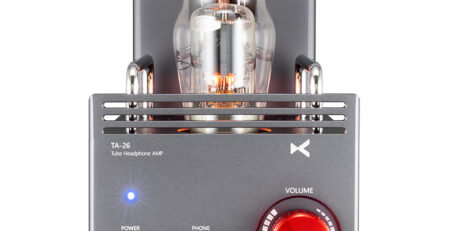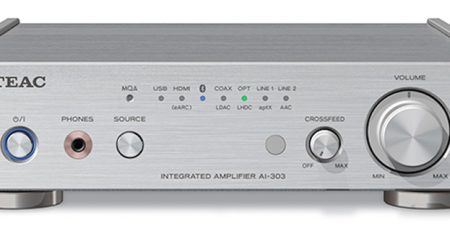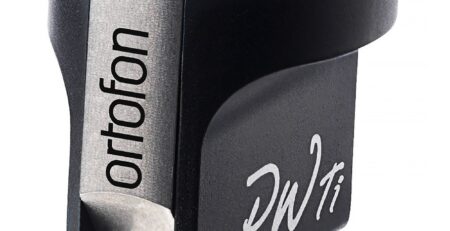
Topping D90SE Measurements (DAC) State Of The Art.
dennis2022-05-30T12:55:54+01:00
I just got my hands on the mighty Topping D90SE and wanted to share my objective analysis. Some might wonder what would be the point to post this, when we already have a complete test at ASR, with our host’s skills and his APx555… Well, at least three reasons, I would say:
1) I need an undisputed reference to set the benchmark for my further gears analyses.
2) That way, I am curious to find if I may reach the limits measurable by my ADC (no doubt I should).
3) In any case, repeatability is always a good thing ! This should remove some doubts about Amir receiving a cherry-picked product from the manufacturer… In case you’re wondering, this unit is brand new from Amazon FR in March 2022, so nine months after Amir tested it. By today, MSRP is 899€.
Disclaimer: Measurements you are about to see are not intended to be as precise or extensive than what you get from a 30k€ AP. There is obviously both hardware and software limitations here, so not quite apples to apples comparison with Amir’s testing. For example, I estimated SINAD (AKA THD+N) to be usually 5 to 6dB worse with my measurements rig, when compared to ASR reviews of the exact same products. Still, this data is enough to have a pretty good idea if the gear is bad or not, stellar, broken, or sub-par…
– ADC : E1DA Cosmos (Grade B), set to 4.5Vrms input for measuring XLR, or 2.7Vrms for RCA. Minimum phase filter.
– Software : RMAA 6.4.5 PRO and Multitone Loopback Analyzer 1.0.13.
– Method : 8 runs for each test, then I chose the closest to the average. All tests are running 24bits / 44.1Khz.
– Topping D90SE : Fixed XLR outputs (4.2Vrms) and USB input for most tests, unless specified otherwise.
| Test |
Results
|
RMAA rating
|
|
Frequency response (from 40 Hz to 15 kHz), dB
|
+0.04, -0.02
|
Excellent
|
| Noise level, dB (A) |
-125.0
|
Excellent
|
| Dynamic range, dB (A) |
124.5
|
Excellent
|
| THD, % |
0.00005
|
Excellent
|
| THD + Noise, dB (A) |
-115.7
|
Excellent
|
| IMD + Noise, % |
0.00031
|
Excellent
|
| Stereo crosstalk, dB |
-125.9
|
Excellent
|
| IMD at 10 kHz, % |
0.00023
|
Excellent
|
|
Test
|
Topping D90SE XLR
|
Topping D90SE XLR (Mono)
|
Topping D90SE XLR 5V (Mono)
|
| Frequency response (from 40 Hz to 15 kHz), dB |
+0.02, -0.02
|
+0.02, -0.02
|
+0.02, -0.02
|
| Noise level, dB (A) |
-125.0
|
-127.4
|
-127.7
|
| Dynamic range, dB (A) |
124.5
|
126.6
|
126.7
|
| THD, % |
0.00005
|
0.00004
|
0.00003
|
| THD + Noise, dB (A) |
-115.7
|
-117.7
|
-119.3
|
| IMD + Noise, % |
0.00031
|
0.00028
|
0.00027
|
| IMD at 10 kHz, % |
0.00023
|
0.00019
|
0.00016
|
| Stereo crosstalk, dB |
-125.9
|
/
|
/
|
…Now, let’s run the usual bunch of tests :
|
Left
|
Right
|
|
| From 20 Hz to 20 kHz, dB |
-0.03, +0.03
|
-0.04, +0.01
|
| From 40 Hz to 15 kHz, dB |
-0.02, +0.02
|
-0.03, +0.01
|
|
Left
|
Right
|
|
| RMS power, dB |
-122.9
|
-123.8
|
| RMS power (A-weighted), dB |
-124.5
|
-125.5
|
| Peak level, dB FS |
-87.1
|
-87.1
|
| DC offset, % |
-0.0
|
-0.0
|
|
Left
|
Right
|
|
| THD, % |
0.00005
|
0.00005
|
| THD + Noise, % |
0.00019
|
0.00017
|
| THD + Noise (A-weighted), % |
0.00017
|
0.00016
|
|
Left
|
Right
|
|
| Dynamic range, dB |
+123.1
|
+124.0
|
| Dynamic range (A-weighted), dB |
+124.1
|
+124.9
|
| DC offset, % |
-0.00
|
+0.00
|
|
Left
|
Right
|
|
| IMD + Noise at 5000 Hz, |
0.00024
|
0.00022
|
| IMD + Noise at 10000 Hz, |
0.00024
|
0.00020
|
| IMD + Noise at 15000 Hz, |
0.00025
|
0.00021
|
|
Left
|
Right
|
|
| IMD + Noise, % |
0.00032
|
0.00030
|
| IMD + Noise (A-weighted), % |
0.00021
|
0.00018
|
|
Left
|
Right
|
|
| Crosstalk at 100 Hz, dB |
-127
|
-126
|
| Crosstalk at 1000 Hz, dB |
-126
|
-124
|
| Crosstalk at 10000 Hz, dB |
-124
|
-116
|
What about RCA outputs? I expect a logical drop in performance (whatever E1DA says, Cosmos ADC is not optimal for single ended measurements), the question is : by how much? Let’s find out:
XLR VS RCA
|
Test
|
Topping D90SE XLR
|
Topping D90SE RCA
|
Topping D90SE RCA 5V
|
|
Frequency response (from 40 Hz to 15 kHz), dB
|
+0.02, -0.02
|
+0.02, -0.02
|
+0.02, -0.02
|
|
Noise level, dB (A)
|
-125.0
|
-121.6
|
-122.0
|
|
Dynamic range, dB (A)
|
124.5
|
121.6
|
121.6
|
|
THD, %
|
0.00005
|
0.00007
|
0.00007
|
|
THD + Noise, dB (A)
|
-115.7
|
-112.5
|
-113.2
|
|
IMD + Noise, %
|
0.00031
|
0.00039
|
0.00038
|
|
Stereo crosstalk, dB
|
-125.9
|
-116.5
|
-116.5
|
USB VS S/PDIF
|
Test
|
Topping D90SE USB
|
Topping D90SE S/PDIF
|
|
Frequency response (from 40 Hz to 15 kHz), dB
|
+0.02, -0.02
|
-0.00, -0.03
|
|
Noise level, dB (A)
|
-125.0
|
-124.4
|
|
Dynamic range, dB (A)
|
124.5
|
123.9
|
|
THD, %
|
0.00005
|
0.00005
|
|
THD + Noise, dB (A)
|
-115.7
|
-115.8
|
|
IMD + Noise, %
|
0.00031
|
0.00031
|
|
Stereo crosstalk, dB
|
-125.9
|
-124.7
|
Multitone Analyzer (100 tones, 5 averages)
RCA
XLR
XLR 5V
One last thing…
When running my first measurements, I noticed quite a few variations in overall frequency response. I then realized that I accidentally changed the filter with the remote. The D90SE has 7 filters called “Modes” from 1 to 7 (default is Mode 3).
None of them measured the same as far as FR is concerned (44.1Khz). Mode 1, in particular, is acting weird, really… My recommendation is for Mode 5 (Fast roll off linear), being the flattest :
… Well, that’s all, folks !
Flanker rating : State Of The Art.











